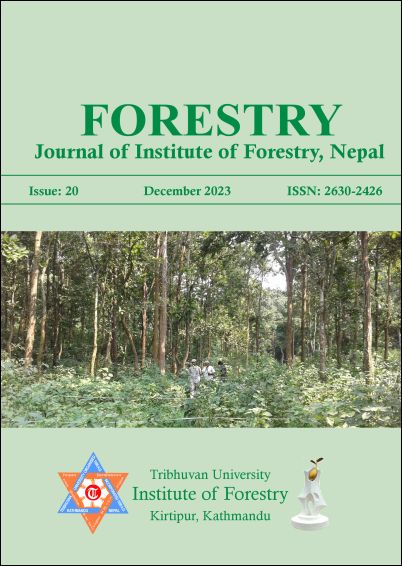Forest Product Preference and Timber Subsidies: Unveiling Economic Differences in Forests of Eastern Mid-hill
DOI:
https://doi.org/10.3126/forestry.v20i1.64274Keywords:
Preference-policy nexus, Forest product, Economic strata, Price subsidiesAbstract
The preferences of forest users regarding forest products are shaped by diverse socio-economic conditions, contributing to a complex preference-policy nexus. However, the factors influencing these preferences remain puzzling. This study aimed to analyze the preferences for forest products and assess the relevance of price subsidies across different economic strata (i.e., rich, medium, poor, and ultra-poor) based on cases from four community forests. The study employed stratified random sampling and well-being rankings to explore the socio-economic dynamics in community forests. Our findings revealed significant variations in forest product preferences among economic classes, with the wealthier class favoring timber, the medium preferring fuel wood, and the poorest class striving for fodder. Despite efforts to implement price subsidies, they proved ineffective, as the discounted timber rates failed to attract households with lower income. Therefore, to ensure the sustainability of community forestry, this study recommends initiating discussions among policymakers to develop policies that facilitate a fair distribution system. One practical solution suggested is to reconsider the current subsidized price differences between wealth groups. By addressing these issues, community forestry can achieve a more equitable and sustainable approach.
Downloads
Downloads
Published
How to Cite
Issue
Section
License
© Tribhuvan University, Institute of Forestry




